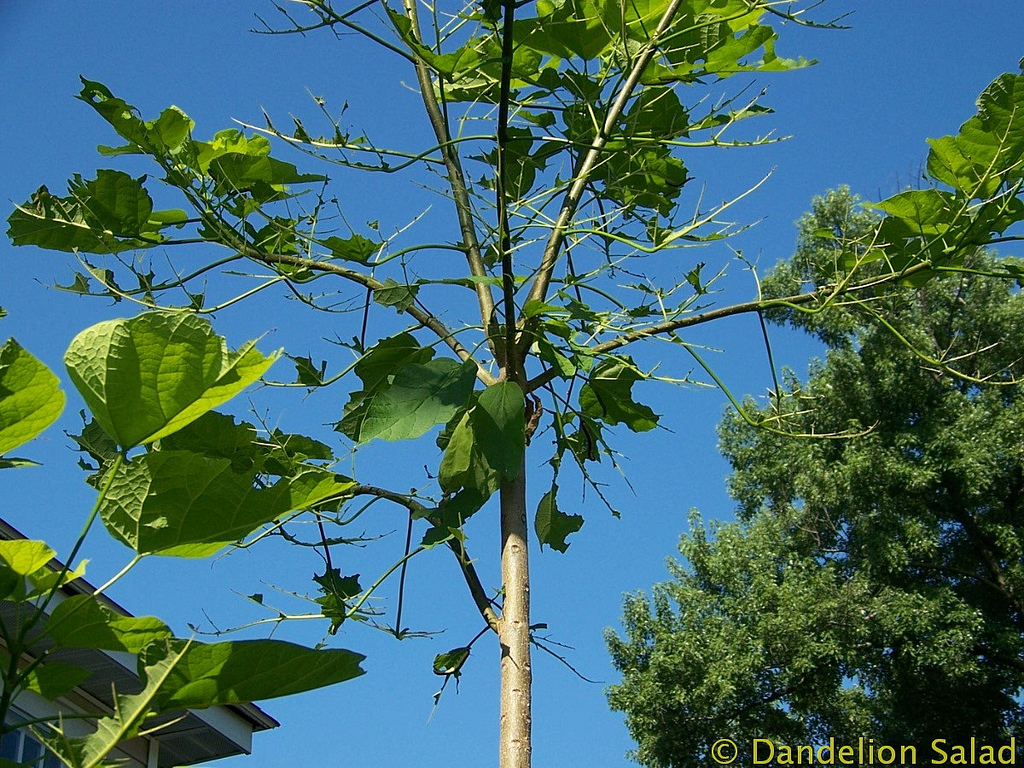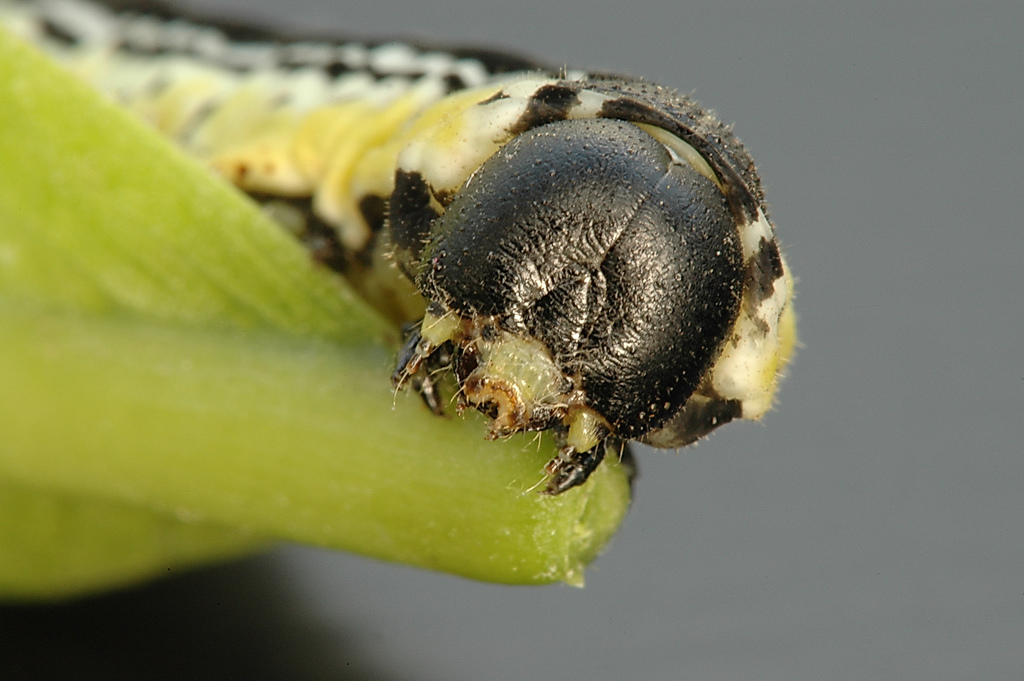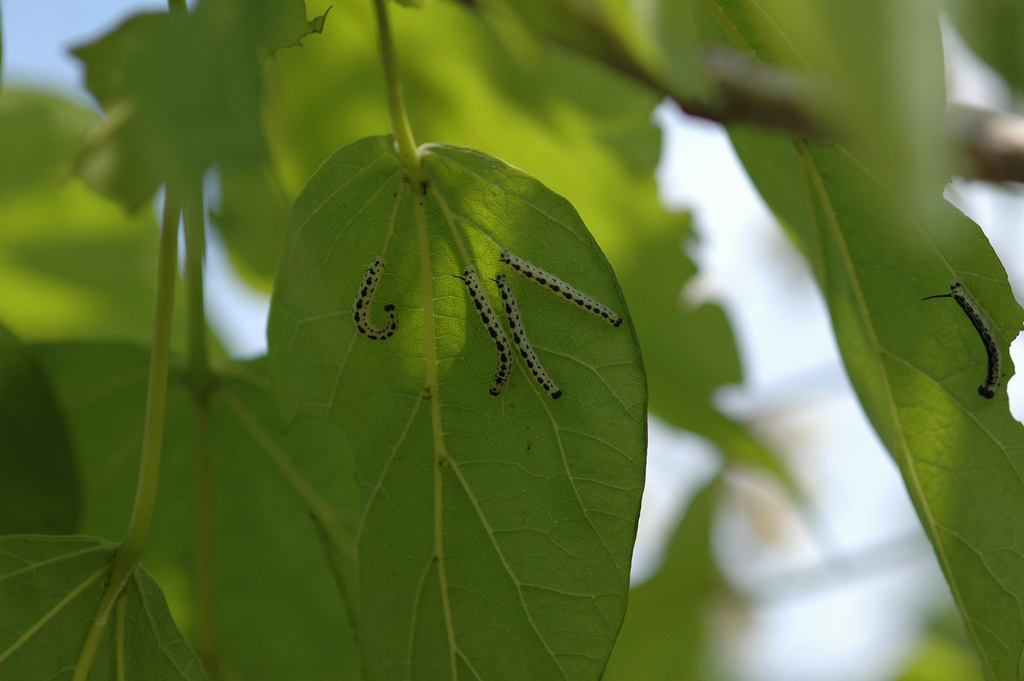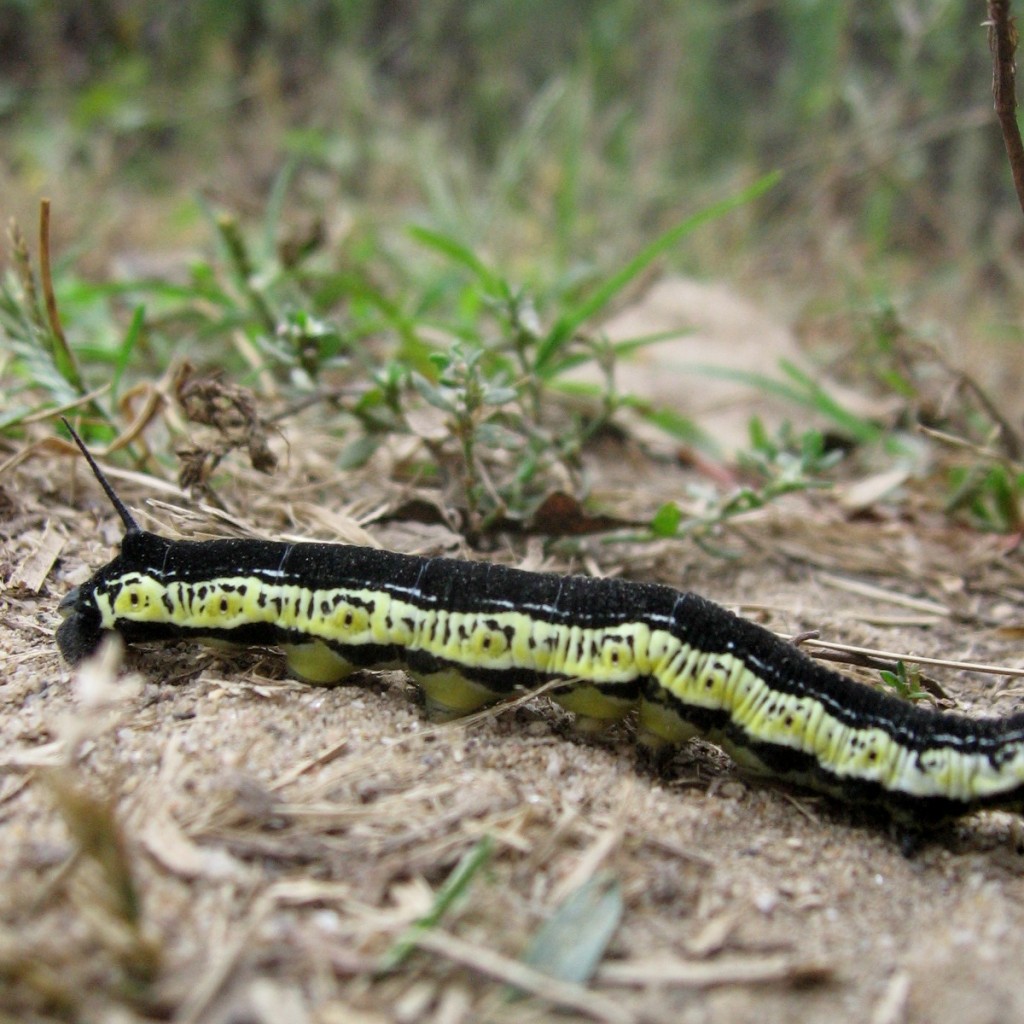
When I was a kid, my dad and I would collect Catalpa worms off a tree in our backyard. Early summer when they emerged was a time to be celebrated. The “worms” are more technically caterpillars of a species of Catalpa Sphinx moth. Since the late 1800’s, when the species was first described, references were made to the caterpillars being valued for fish bait—the very reason my father and I were braving the Arkansas summer sun to collect them.

My father and I would scour the Catalpa Tree in our backyard for these worms. The moth gets its name from the tree because it is the moth’s sole source of food. In the spring the pupae emerge from the soil and shortly after the moth develops in time for the Catalpa tree leafing. The moths mate and females lay eggs masses, number of 1000 eggs, on the undersides of leaves. These eggs hatch in about a week and develop in the caterpillar. All of this can occur in less than 6 weeks. In a single summer, 3-4 generations can occur, lucky for my father and I using them as bait but unlucky for the tree. Indeed, the Catalpa worms are vicious predators and can kill off an entire tree by consuming all the leaves.

More importantly, Catalpa worms are quite simply irresistible to catfish. Why is a bit of a mystery. Catalpa worms have tough skin so they stay on a hook better than an earthworm, or as I’m fonder of calling them nightcrawlers. Fishermen believe the sweet smelling bright fluorescent green “juice”, more technically just blood and guts, that emits from wounds is appealing to the fish.

